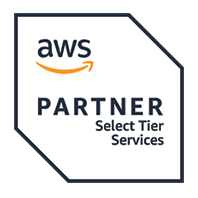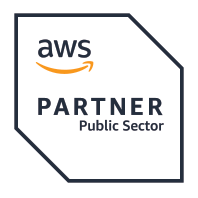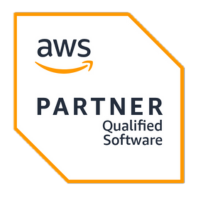“Cloud FinOps” stands for Cloud Financial Operations, and it is a set of practices aimed at bringing together finance, technology, and business teams to optimize cloud costs. The term is a combination of “finance” and “operations.” Cloud FinOps is essentially a cultural and operational framework for managing cloud spending in a scalable and efficient way.
Before we delve into the insights, let’s briefly examine the industry’s interest in the popular topic of Cloud Financial Operations based on Google Search data.

Key principles and components of Cloud FinOps include:
- Collaboration: Cloud FinOps emphasizes collaboration between different teams, including finance, engineering, and operations. The goal is to break down silos and create a shared responsibility for managing cloud costs.
- Data-Driven Decision Making: Cloud FinOps relies on data to make informed decisions about cloud spending. Teams use analytics, reporting, and monitoring tools to gain insights into usage patterns, identify areas of inefficiency, and optimize resource allocation.
- Showback and Chargeback: Cloud FinOps encourages implementing showback or chargeback mechanisms. Showback involves providing visibility into usage and costs for different teams without actually charging them. Chargeback takes it a step further by allocating actual costs to different teams or departments. This helps create accountability and encourages responsible resource usage.
- Automation: Automation is a key aspect of Cloud FinOps. By automating processes such as scaling, scheduling, and resource provisioning, teams can optimize resource utilization and reduce costs.
- Optimization: Continuous optimization is a core principle of Cloud FinOps. This involves identifying underutilized resources, selecting the right types and sizes of instances, and making adjustments based on changing workload requirements. Optimization efforts may also involve leveraging reserved instances, spot instances, or other pricing models offered by cloud providers.
- Budgeting and Forecasting: Cloud FinOps includes setting budgets and forecasting future costs. This helps organizations plan for expenses, allocate resources efficiently, and avoid unexpected overages.
- Education and Training: Cloud FinOps emphasizes the importance of educating teams about cloud costs and best practices. Training programs help individuals understand the financial implications of their actions, encouraging a cost-conscious mindset.
Cloud FinOps is essential for several reasons, especially as organizations increasingly rely on cloud services. Here are key reasons why Cloud FinOps practices are crucial:
- Cost Control and Optimization:
- Scalability Challenges: Cloud environments offer scalability, but without proper management, costs can spiral out of control as resources are scaled up.
- Resource Efficiency: Cloud FinOps helps in optimizing resource usage, ensuring that organizations only pay for what they need.
- Cross-Functional Collaboration:
- Breaking Silos: Traditional IT operations and financial teams often work in silos. Cloud FinOps breaks down these barriers, fostering collaboration between finance, engineering, and operations teams.
- Shared Responsibility: Cloud FinOps promotes a shared responsibility model, where all stakeholders are involved in managing and controlling cloud costs.
- Data-Driven Decision Making:
- Visibility and Accountability: Cloud FinOps relies on data analytics and reporting to provide visibility into cloud spending. This helps in holding teams accountable for their resource usage and costs.
- Informed Decision Making: Data-driven insights enable organizations to make informed decisions about resource allocation, optimization strategies, and budgeting.
- Budgeting and Forecasting:
- Financial Planning: Cloud FinOps involves setting budgets and forecasting, allowing organizations to plan for cloud expenses and avoid unexpected overages.
- Aligning with Business Goals: Effective budgeting ensures that cloud spending aligns with broader business objectives and financial plans.
- Automation and Efficiency:
- Operational Efficiency: Cloud FinOps encourages the automation of processes such as resource provisioning, scaling, and scheduling. Automation enhances operational efficiency and reduces the risk of human errors.
- Cost-Effective Scaling: Automation helps in dynamically scaling resources based on demand, ensuring that organizations can meet performance requirements without unnecessary costs.
- Showback and Chargeback:
- Accountability: Implementing showback or chargeback mechanisms creates accountability within teams. Individuals become aware of the costs associated with their resource usage, leading to more responsible decision-making.
- Continuous Optimization:
- Adaptability to Change: Cloud FinOps involves continuous optimization to adapt to changing workloads, technology advancements, and pricing models offered by cloud providers.
- Cost Savings: Optimization efforts lead to cost savings by identifying and addressing inefficiencies, underutilized resources, and opportunities for using cost-effective cloud services.
- Education and Training:
- Cost-Conscious Mindset: Cloud FinOps promotes education and training programs to raise awareness about cloud costs. This helps in fostering a cost-conscious mindset among teams, reducing unnecessary spending.
- Strategic Cloud Management:
- Strategic Decision Making: Cloud FinOps is strategic in nature, allowing organizations to make decisions that align with long-term business goals and financial objectives.
- Competitive Advantage: Effectively managing cloud costs provides a competitive advantage, allowing organizations to allocate resources efficiently and invest in innovation.
In summary, Cloud FinOps is crucial for organizations seeking to maximize the benefits of cloud computing while maintaining control over costs. It addresses the challenges of scalability, encourages collaboration, and ensures that cloud resources are aligned with business priorities. By adopting Cloud FinOps practices, organizations can achieve financial governance, operational efficiency, and strategic cloud management.
Phases in CloudFinOps
Cloud FinOps is typically organized into three key phases, each representing a different aspect of managing cloud costs and optimizing cloud financial operations. These phases are often referred to as the “Three Phases of Cloud FinOps.” Here’s an overview of each phase:
Inform Phase:
The “Inform” phase in Cloud FinOps is the initial stage of the FinOps lifecycle, focusing on gaining visibility into cloud spending and usage. This phase is crucial for organizations to understand where and how their money is being spent in the cloud environment. The primary objectives of the Inform phase are:
- Visibility and Understanding:
- Objective: Gain a comprehensive understanding of cloud costs and usage.
- Actions:
- Utilize cloud management tools and services to access detailed insights into spending patterns.
- Explore the breakdown of costs across different services, regions, and teams.
- Objective: Gain a comprehensive understanding of cloud costs and usage.
- Data-Driven Decision-Making:
- Objective: Enable data-driven decision-making by leveraging insights obtained from cost analysis.
- Actions:
- Use tools such as AWS Cost Explorer or other cloud provider dashboards to analyze historical spending and forecast future costs.
- Identify cost drivers and patterns to inform decision-making on resource allocation and optimization.
- Objective: Enable data-driven decision-making by leveraging insights obtained from cost analysis.
- Cost Attribution:
- Objective: Attribute costs accurately to specific projects, teams, or business units.
- Actions:
- Implement tagging strategies to label resources with metadata, facilitating cost attribution.
- Align costs with organizational structures to ensure accountability and transparency.
- Objective: Attribute costs accurately to specific projects, teams, or business units.
- Setting Financial Goals:
- Objective: Establish financial goals based on insights gained during the Inform phase.
- Actions:
- Define budgetary constraints aligned with organizational objectives.
- Identify opportunities for cost optimization and efficiency improvements.
- Objective: Establish financial goals based on insights gained during the Inform phase.
- Educating Teams:
- Objective: Educate teams across finance, IT, and operations about cloud costs and the importance of financial accountability.
- Actions:
- Conduct training sessions to familiarize teams with cloud billing concepts.
- Foster a culture of financial responsibility and awareness.
- Objective: Educate teams across finance, IT, and operations about cloud costs and the importance of financial accountability.
- Tool Selection:
- Objective: Choose appropriate cloud cost management tools to support the Inform phase.
- Actions:
- Evaluate and select tools that provide detailed insights, cost breakdowns, and forecasting capabilities.
- Ensure selected tools align with organizational requirements and scale effectively.
- Objective: Choose appropriate cloud cost management tools to support the Inform phase.
Key Outcomes of the Inform Phase:
- Clear Visibility: Organizations gain a clear view of their cloud spending, understanding how resources contribute to overall costs.
- Informed Decision-Making: The Inform phase provides the foundation for informed decision-making, enabling organizations to optimize costs and allocate resources strategically.
- Budget Alignment: Setting realistic budgets and financial goals becomes possible with the insights gained during the Inform phase.
- Cross-Functional Awareness: Teams across finance, IT, and operations become aware of the financial implications of their actions in the cloud environment.
The Inform phase is foundational to the success of Cloud FinOps, laying the groundwork for subsequent phases such as Optimize and Operate. It is an ongoing process that organizations revisit regularly to adapt to changing business needs and cloud service offerings.
Optimize Phase:
The “Optimize” phase in Cloud FinOps is the second stage of the FinOps lifecycle. After gaining visibility and insights into cloud spending during the “Inform” phase, the Optimize phase is focused on taking action to optimize costs, improve resource efficiency, and ensure that cloud resources are used in the most cost-effective manner. The primary objectives of the Optimize phase include:
- Cost Analysis and Optimization:
- Objective: Identify opportunities for cost savings and optimize resource usage.
- Actions:
- Analyze detailed cost reports to understand the usage patterns and identify areas for optimization.
- Implement strategies to eliminate inefficiencies, such as rightsizing instances or using reserved instances where applicable.
- Objective: Identify opportunities for cost savings and optimize resource usage.
- Setting and Monitoring Budgets:
- Objective: Establish and monitor budgets to control and manage cloud spending.
- Actions:
- Set budgetary limits aligned with organizational goals and priorities.
- Implement budget alerts and notifications to proactively manage and control spending.
- Objective: Establish and monitor budgets to control and manage cloud spending.
- Usage Efficiency:
- Objective: Ensure resources are used efficiently, avoiding underutilization or overprovisioning.
- Actions:
- Implement auto-scaling and dynamic provisioning to match resource usage with demand.
- Identify and address idle resources or those with low utilization.
- Objective: Ensure resources are used efficiently, avoiding underutilization or overprovisioning.
- Rate Optimization:
- Objective: Optimize costs by selecting the most cost-effective pricing models and options.
- Actions:
- Evaluate different pricing models offered by the cloud provider.
- Leverage spot instances or spot fleets for non-critical workloads to take advantage of lower pricing.
- Objective: Optimize costs by selecting the most cost-effective pricing models and options.
- Reserved Instances (RIs) and Committed Use Discounts (CUD):
- Objective: Maximize cost savings through the strategic use of reserved instances or committed use discounts.
- Actions:
- Identify workloads with steady and predictable usage suitable for reserved capacity.
- Explore committed use discounts for long-term commitments to specific resources.
- Objective: Maximize cost savings through the strategic use of reserved instances or committed use discounts.
Key Outcomes of the Optimize Phase:
- Cost Savings: Organizations achieve tangible cost savings by identifying and implementing optimization opportunities.
- Efficient Resource Utilization: Resources are used more efficiently, ensuring that organizations pay only for what they need.
- Budget Compliance: By setting and monitoring budgets, organizations maintain control over cloud spending and avoid unexpected costs.
- Strategic Pricing: Optimal pricing models, including reserved instances and committed use discounts, are employed to align with budgetary goals.
- Improved Performance: Optimization efforts often lead to improved performance as resources are configured to meet actual demand.
The Optimize phase is an ongoing and iterative process, reflecting the dynamic nature of cloud environments and changing business needs. Regular reviews and adjustments are essential to continuously refine and optimize cloud usage, ensuring that the organization benefits from cost-effective and efficient cloud operations. The outcomes of the Optimize phase contribute to achieving the overarching goals of Cloud FinOps, which include financial accountability, transparency, and alignment with business objectives.
Operate Phase:
The “Operate” phase in Cloud FinOps is the third and final stage of the FinOps lifecycle. Building upon the insights gained during the “Inform” and the cost optimization strategies implemented in the “Optimize” phase, the Operate phase is focused on establishing processes, automation, and continuous improvement to ensure ongoing financial accountability and efficiency in cloud operations. The primary objectives of the Operate phase include:
- Aligning Teams to Business Goals:
- Objective: Ensure that cloud operations align with broader business objectives.
- Actions:
- Foster collaboration between finance, IT, and operations teams to maintain a shared understanding of business goals and cloud spending implications.
- Regularly communicate the financial impact of cloud decisions to stakeholders.
- Objective: Ensure that cloud operations align with broader business objectives.
- Metric-Driven Cost Optimization:
- Objective: Utilize metrics to drive continuous cost optimization efforts.
- Actions:
- Establish key performance indicators (KPIs) related to cloud costs, usage, and optimization.
- Regularly monitor and analyze these metrics to identify areas for improvement.
- Objective: Utilize metrics to drive continuous cost optimization efforts.
- Automating Cost Management:
- Objective: Implement automation to streamline and enhance cost management processes.
- Actions:
- Leverage automation tools to enforce policies, allocate costs, and generate reports.
- Integrate automated alerts and notifications to address cost anomalies in real-time.
- Objective: Implement automation to streamline and enhance cost management processes.
- FinOps for the Container World:
- Objective: Extend FinOps practices to containerized environments.
- Actions:
- Implement FinOps principles for managing costs associated with container orchestration platforms like Kubernetes.
- Optimize container resource allocation to avoid overprovisioning and minimize costs.
- Objective: Extend FinOps practices to containerized environments.
- Managing to Unit Economics:
- Objective: Focus on the economics of individual units of work or services.
- Actions:
- Break down costs to a granular level, considering the cost per transaction, user, or other relevant units.
- Optimize resources and configurations based on the economics of specific units.
- Objective: Focus on the economics of individual units of work or services.
Key Outcomes of the Operate Phase:
- Business Alignment: Cloud operations are aligned with and contribute to broader business goals.
- Continuous Optimization: Organizations establish a culture of continuous improvement, using metrics to drive ongoing optimization efforts.
- Automation and Efficiency: Cost management processes are automated, enhancing efficiency and reducing the likelihood of manual errors.
- Containerized Environment Optimization: FinOps principles are applied to containerized environments, ensuring efficient cost management in modern application architectures.
- Unit Economics Focus: The focus on unit economics enables organizations to make informed decisions about resource allocation and optimization.
The Operate phase represents the culmination of the FinOps lifecycle, emphasizing the need for continuous improvement, automation, and alignment with evolving business objectives. Organizations that successfully navigate the Operate phase are well-positioned to maintain financial accountability, optimize costs, and adapt to the dynamic nature of cloud environments over the long term. Regular reviews, feedback loops, and collaboration between teams are essential elements of the Operate phase to ensure the sustained success of Cloud FinOps practices.
We have incredibly skilled Cloud specialized consultants who can help you implement Cloud Finops Solutions from start to finish for your organization. Talk to one of our experts to see how we can assist your organization in its Cloud FinOps journey.




